How to layer necklaces by length to prevent tangles? Layering necklaces has become a go-to styling trick for fashion lovers who want to add depth and personality to their outfits. However, one common frustration stands in the way—tangled chains. Learning how to wear multiple necklaces without tangling can transform your jewelry game from chaotic to chic. The good news is that with the right techniques, lengths, and materials, you can create stunning layered looks while keeping every piece neat and knot-free. Whether you’re dressing up for a night out or enhancing a casual daytime look, mastering this skill makes a big difference. In fact, many stylists and designers rely on smart layering rules to achieve balanced, eye-catching results.
By understanding necklace length ratios, choosing the right metals, and using simple organization tools, you’ll avoid the morning scramble of untangling delicate chains. Moreover, proper care and storage play a key role in long-term success. This guide walks you through practical tips, outfit pairings, and expert-approved strategies. As a result, you’ll gain confidence in mixing styles without sacrificing convenience. After all, fashion should be fun—not frustrating.
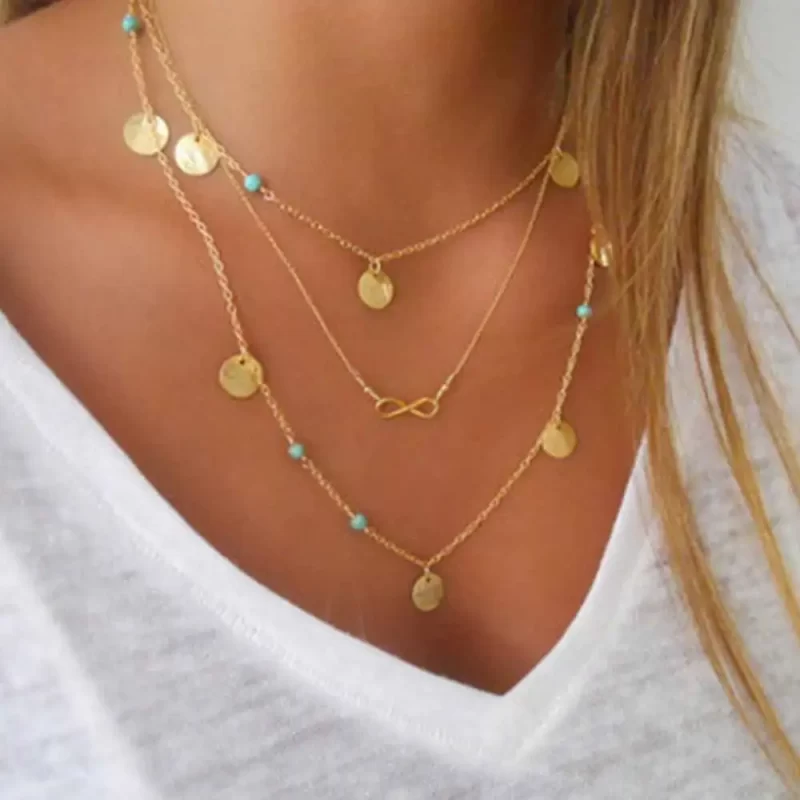 Understanding Necklace Lengths and Their Role in Layering
Understanding Necklace Lengths and Their Role in Layering
Choosing the right lengths is the first step in learning how to wear multiple necklaces without tangling. First, familiarize yourself with standard necklace measurements. Chokers typically range from 14 to 16 inches and sit snugly at the base of the neck. Next, princess-length necklaces measure 17 to 19 inches and fall just below the collarbone. These are versatile and work well as middle layers.
Then, matinee necklaces span 20 to 24 inches and rest on the upper chest. They serve as excellent anchors for longer combinations. Finally, opera and rope-style necklaces extend beyond 28 inches. They drape elegantly and function as dramatic outer layers. When layering, always space lengths by at least two inches. For example, pair a 16-inch choker with an 18-inch pendant and a 22-inch chain. This gap prevents overlap and reduces friction.
Moreover, visualize how each chain falls on your body. Shorter pieces highlight facial features, while longer ones draw the eye downward. Therefore, balance is essential. Avoid clustering three short necklaces together—they will tangle quickly and appear cluttered. Instead, mix proportions intentionally.
Additionally, consider your neckline. V-necks allow more room for layering. Turtlenecks limit space, so opt for one or two thin chains. Square and scoop necklines offer open canvas areas, ideal for showcasing multiple strands. By matching necklace lengths to your outfit’s cut, you enhance both comfort and style.
Finally, test your combination before leaving home. Stand in front of a mirror and move your head side to side. If chains slide over each other constantly, adjust the order or swap one out. With practice, selecting complementary lengths becomes second nature.
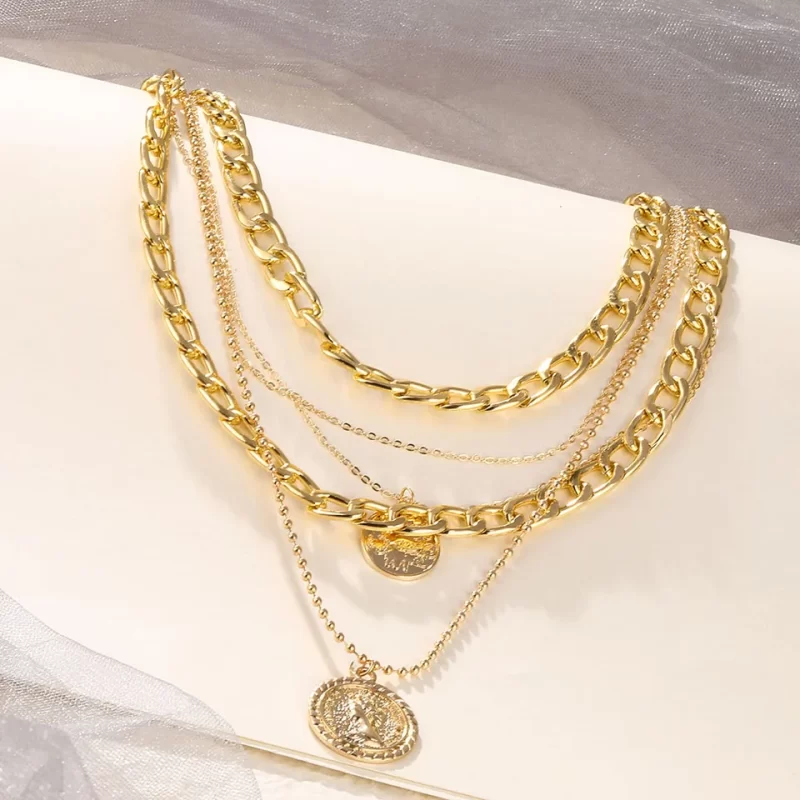 Choosing the Right Materials and Chain Styles
Choosing the Right Materials and Chain Styles
The type of metal and chain design greatly affects tangling risks. First, heavier chains like curb, rope, or figaro styles resist twisting better than fine, lightweight ones. Their structure adds weight, which helps them stay in place. Meanwhile, delicate cable or box chains tangle more easily due to flexibility.
Second, mix textures to reduce contact points. Combine a smooth, flat chain with a twisted or beaded one. Different surfaces slide past each other instead of catching. For instance, pair a sleek snake chain with a chunky link design. This contrast also adds visual interest.
Third, consider metal weight. Stainless steel, sterling silver, and gold-filled options provide enough mass to hang properly. Lightweight alloys or plastic-coated chains flop around and increase knotting chances. Therefore, invest in quality materials whenever possible.
Fourth, avoid overly long pendants on multiple pieces. Large charms or stones cause imbalance. One statement pendant works best as the focal point. Keep others minimal to maintain harmony.
Fifth, check clasp types. Lobster clasps are more secure than spring rings. They minimize accidental opening and shifting during wear. Also, ensure all clasps are fully closed before putting on your necklaces.
Sixth, use different finishes strategically. Mix matte with polished, or brushed with shiny elements. Not only does this prevent visual monotony, but it also reduces surface adhesion between chains. Smooth and rough textures behave differently when in contact.
Seventh, limit the number of necklaces per outfit. Three is usually the sweet spot. Four or more increase tangling odds significantly. Stick to one bold piece and two supporting layers for clarity and ease.
Practical Tips for Wearing Multiple Necklaces Without Tangling
Now that you’ve selected the right lengths and styles, apply these real-world strategies to avoid knots. First, put on your longest necklace before the shorter ones. Gravity helps it settle lower, creating natural separation. Then add mid-length, followed by the shortest chain. This sequence minimizes overlap during dressing.
Second, fasten each necklace individually. Do not try to loop multiple chains at once. Handle one at a time to ensure proper positioning. Once secured, gently adjust each chain to its desired position.
Third, use double-sided fashion tape sparingly. Place a tiny dot on the back of a pendant to keep it centered. This prevents swinging and reduces chain movement. Be careful not to damage delicate surfaces.
Fourth, choose necklaces with built-in anti-tangle features. Some brands design connectors or spacers that hold chains apart. Others include small silicone beads between links to limit sliding.
Fifth, rotate your layering combinations regularly. Wearing the same set daily increases wear and friction. Switching styles gives each piece a rest and lowers tangling frequency.
Sixth, avoid excessive movement when wearing layered necklaces. Sudden turns, bending over, or pulling clothes over your head can twist chains. Move slowly and remove necklaces before changing outfits.
Seventh, consider magnetic necklace holders. These wearable tools clip onto your clothing and suspend extra chains until needed. They are especially useful for events where you plan to switch looks.
Eighth, practice at home. Lay out your intended combination and wear it around the house. Observe how the chains interact during normal activities. Make adjustments before wearing them in public.
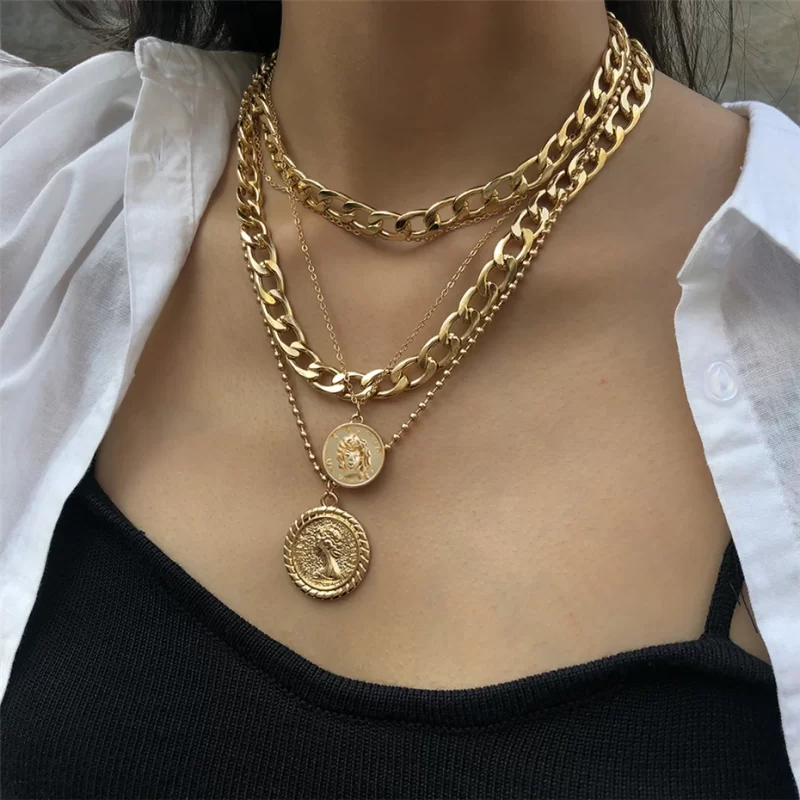 How to Store Necklaces to Prevent Tangles Before You Even Wear Them
How to Store Necklaces to Prevent Tangles Before You Even Wear Them
Prevention starts long before you get dressed. Proper storage plays a major role in how to wear multiple necklaces without tangling. First, use a jewelry stand with multiple arms. Each necklace hangs separately, avoiding contact. Wooden or acrylic stands work well for daily access.
Second, invest in a travel roll or pouch with individual slots. These compact organizers keep chains isolated during trips. Roll-up cases with button closures protect against motion damage in bags.
Third, hang necklaces on hooks inside your closet or drawer. Install small knobs or adhesive hooks to create dedicated spaces. This method works especially well for longer pieces.
Fourth, repurpose everyday items. An ice cube tray with soft lining can hold coiled chains. Each compartment keeps one necklace apart from the rest. Similarly, a strawberry container with divided sections offers a budget-friendly solution.
Fifth, wrap delicate chains in tissue paper before storing. Fold the paper over the necklace and place it in a soft pouch. This reduces friction and protects against scratches.
Sixth, avoid tossing necklaces into a pile. A jumbled drawer invites knots and breakage. Take thirty seconds to organize after each use. This small habit saves time later.
Seventh, clean your necklaces before storing. Dirt and oils attract moisture, increasing corrosion and stickiness. Wipe each chain gently with a dry cloth to maintain smoothness.
Eighth, inspect clasps weekly. Loose or damaged closures lead to unintended openings and tangles. Replace weak clasps promptly to maintain safety and order.
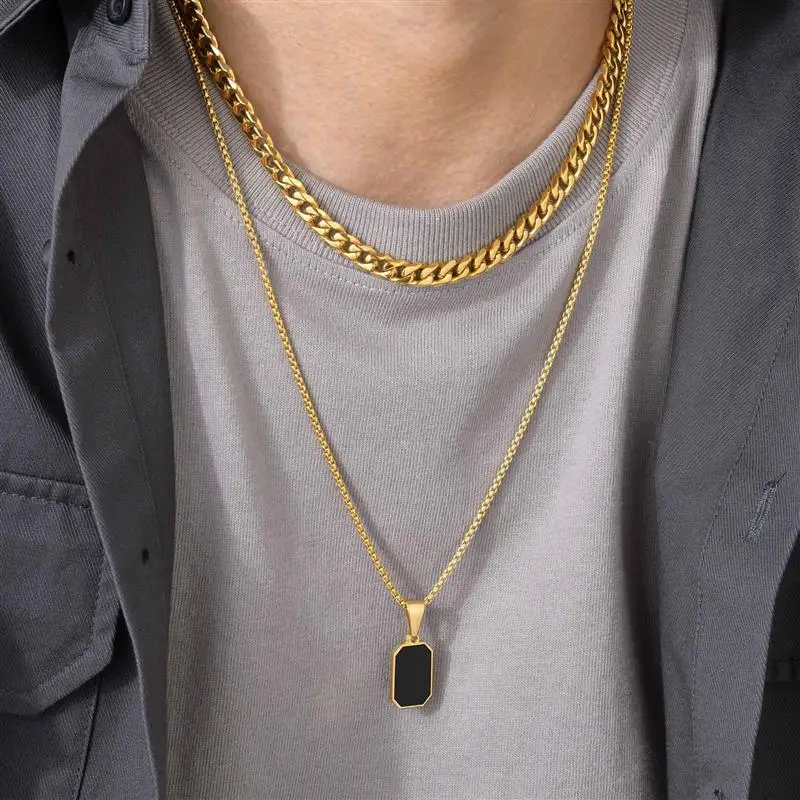 Frequently Asked Questions About Wearing Multiple Necklaces Without Tangling
Frequently Asked Questions About Wearing Multiple Necklaces Without Tangling
Can I layer necklaces made of different metals?
Yes, mixing gold, silver, and rose gold is stylish. Just ensure they complement your skin tone and outfit.
How many necklaces can I wear at once?
Three is ideal. More than that increases tangling risk and visual clutter.
Should I match all my necklace lengths?
No. Vary lengths by at least two inches to prevent overlapping.
Do anti-tangle sprays work?
Some products claim to reduce friction. However, results vary. Physical separation remains more effective.
Is it safe to sleep with layered necklaces on?
No. Movement during sleep causes knots and stress on chains. Always remove before bed.
What if my necklace still tangles?
Use a needle or pin to gently loosen knots. Apply baby oil sparingly to help slides.
Can I wash necklaces after tangling?
Yes, but dry thoroughly. Moisture worsens future tangling if left inside crevices.
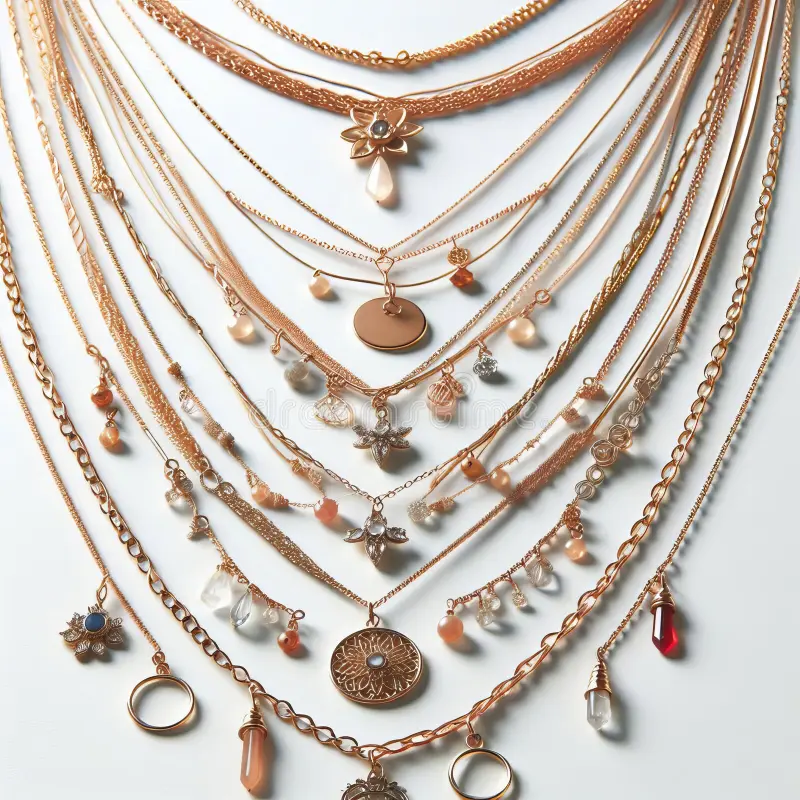 Styling Ideas for Layered Necklaces That Stay Tangle-Free
Styling Ideas for Layered Necklaces That Stay Tangle-Free
Now that you know how to avoid knots, explore fashionable ways to wear your collection. First, try the minimalist stack. Use three thin chains of varying lengths. Add a tiny pendant on the middle one for subtle detail. This look suits office wear and brunch outfits.
Second, go for contrast. Pair a bold, wide chain with two finer ones. The thick piece acts as an anchor, reducing movement in the others. Choose contrasting finishes like matte black and shiny silver.
Third, embrace symmetry. Wear identical short necklaces on either side of a central pendant. This balanced layout minimizes crossing and tangling.
Fourth, use theme-based layering. Combine nature-inspired pieces like leaf, moon, and star pendants. Stick to one metal tone for cohesion. Thematic sets feel intentional and organized.
Fifth, highlight a special occasion. For weddings or parties, add a sparkling crystal necklace to your usual set. Its weight keeps it stable, while the shine draws attention.
Sixth, experiment with asymmetry. Let one longer chain drape diagonally across a deep neckline. Keep the other two shorter and centered. Movement is limited, so tangling stays low.
Seventh, match your mood. On bold days, mix edgy spikes with smooth chains. On calm days, stick to flowing lines and soft curves. Your emotional state can guide your choices.
Final Thoughts on Mastering How to Wear Multiple Necklaces Without Tangling
How to untangle multiple necklaces quickly without damaging them? Learning how to wear multiple necklaces without tangling empowers you to express your style confidently. It removes the daily hassle of unknotting chains and protects your favorite pieces from damage. With thoughtful selection, smart layering, and proper storage, you can enjoy beautiful, tangle-free combinations every day. Furthermore, the right techniques enhance both appearance and longevity. Whether you prefer delicate elegance or bold statements, the principles remain the same. Prioritize length variation, material quality, and intentional design. Over time, these habits become second nature. Most importantly, remember that fashion should reflect your personality—not cause stress. By applying the tips in this guide, you’ll turn a common frustration into a signature strength. Indeed, mastering how to wear multiple necklaces without tangling is more than a skill—it’s a step toward effortless, personalized style.